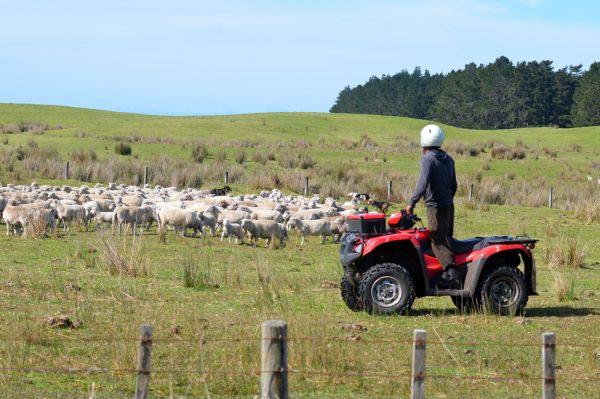
Ciaran Roche
FBD Risk Manager

Understanding quad bike safety

In November 2023, significant changes in regulations regarding quad bike operation under the Safety, Health and Welfare at Work (General Application) Regulations came into effect. These new regulations were in response to concerns over the number of fatal and serious work-related accidents involving quad bikes or all-terrain vehicles (ATVs), particularly in the agriculture and forestry sectors.
New regulations – what you need to know
The new regulations mandate that all quad bike operators in the workplace must complete a quad bike training course provided by a registered training provider to a QQI Standard or equivalent. Additionally, operators are required to wear appropriate head protection while operating a quad.
Understanding quad bike safety
Quad bikes are an extremely useful piece of equipment for farm work, designed to handle diverse terrain types. It is important to remember though that improper operation can pose significant risks of death or severe injury to operators. Key safety concerns include training, experience, personal protective equipment (PPE), maintenance, and terrain knowledge.
Common causes of accidents
The main causes of deaths or serious injuries involving quad bikes include vehicle overturns, collisions with structures or objects, being trapped under an overturned machine, and accidents involving pedestrians. These incidents often stem from factors such as lack of formal training or experience, excessive speed, carrying passengers or unbalanced loads, and poor maintenance.
Practical safety measures
1. Get training
All quad bike operators must undergo training to acquire the necessary skills and knowledge for safe operation. Training should cover the use of any towed equipment or attachments.
2. Wear appropriate PPE
Head protection, in the form of an approved helmet, is essential to reduce the severity of head injuries. To ensure that you are correctly protected, reference the manufacturer’s recommendations for the ideal helmet, ensuring it fits snugly and securely. Helmets with face shields or goggles not only protect the eyes but also enhance visibility. Operators should also consider additional PPE such as gloves and safety footwear.
3. No passengers
Quad bikes are designed for single riders. Carrying passengers increases the risk of accidents and should be avoided. The extended seat is designed for active riding, allowing operators to shift their body weight for various slope conditions. It is not intended for carrying additional passengers.
4. Avoid overloading
Overloading can disrupt weight distribution and impair braking. Operators should adhere to manufacturers’ towing capacity and loading limits.
5. Maintain your quad
Regular maintenance checks ensure that the quad bike is in good working order, minimising the risk of accidents due to mechanical failures.
Additional safety tips
- Familiarise yourself with the terrain to mitigate risks associated with slopes, obstacles, and unfamiliar terrain.
- Adhere to road-use regulations if operating quad bikes on public roads.
- Remember the minimum age for operating farm type working quad bikes is at least 16 years of age, it is usually clearly stated on the quad.
- Quad bike safety is paramount in preventing accidents and protecting lives. By adhering to regulations, undergoing training, and implementing practical safety measures, operators can ensure a safer working environment. Remember, safety should always be the top priority when operating quad bikes.

For more farm safety information, scan the code




